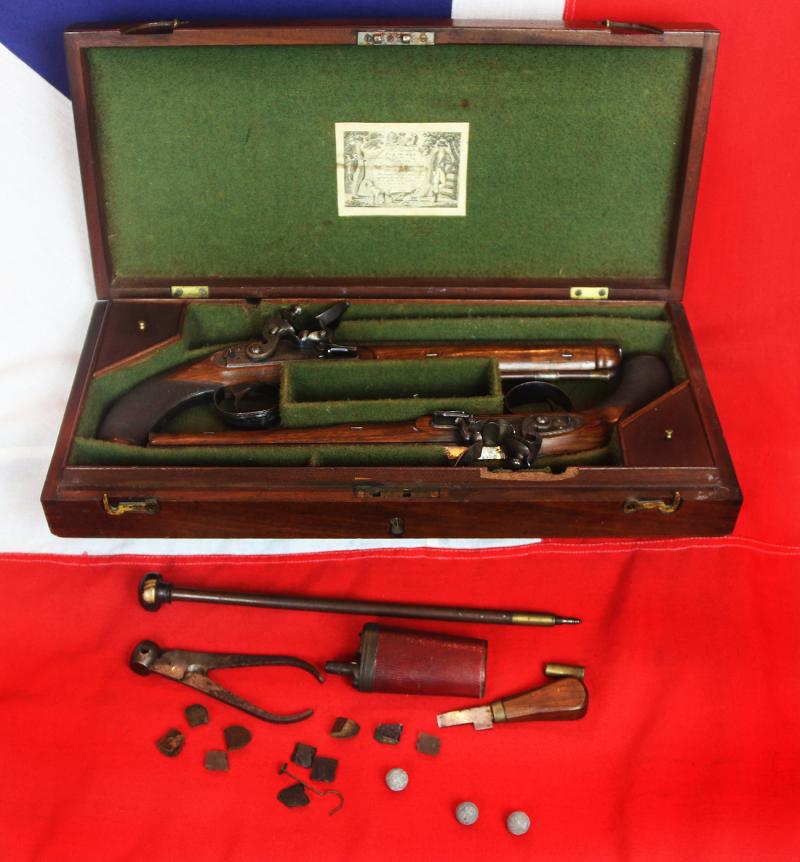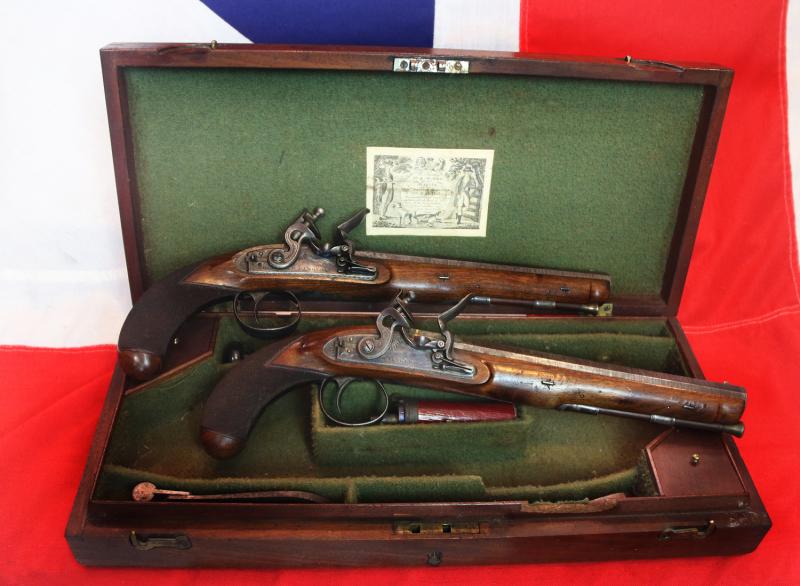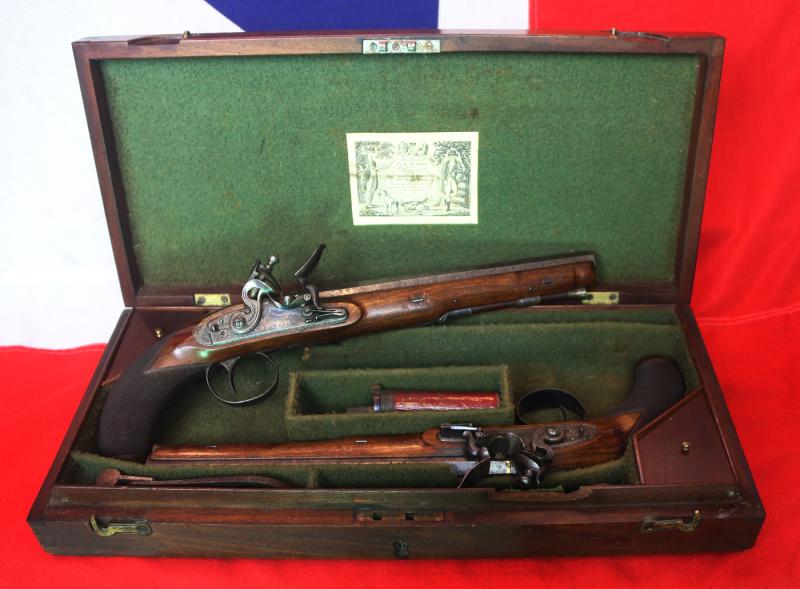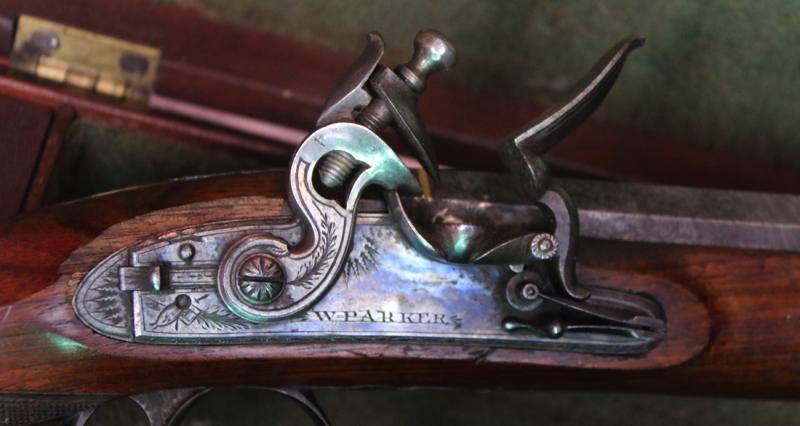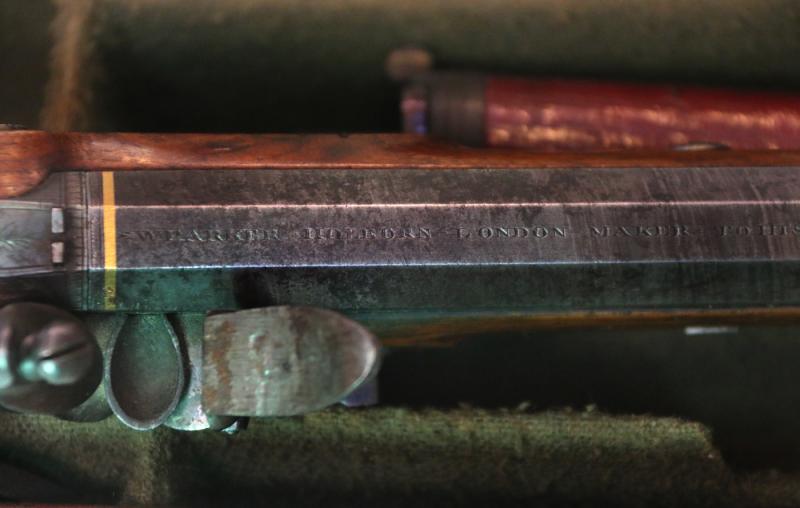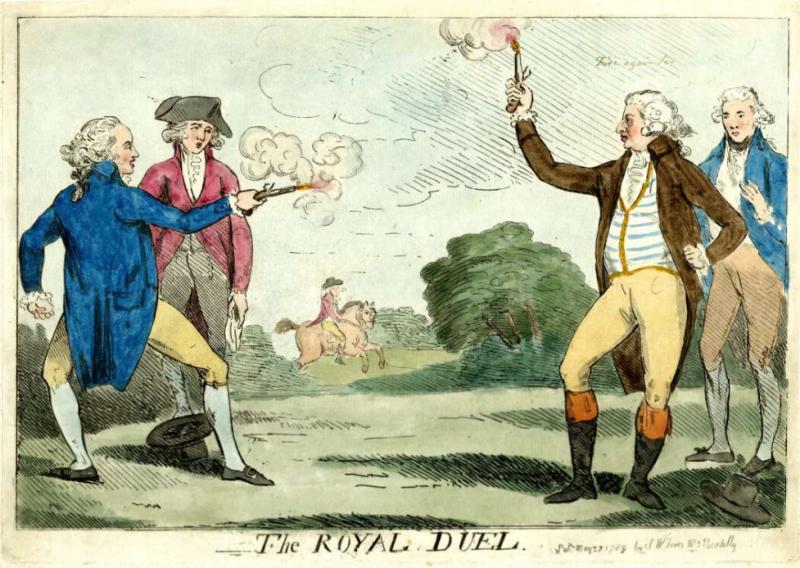An Extra Fine Condition Classic, Cased Pair of Late 18th to Early 19th Century Damascus Barrelled Duelling Pistols by Finest London Maker. Original Mahoghany Case with Tools and Accessories
A superb cased pair, in original case, very similar and from the same design, and form as another very fine cased pair, commissioned from the same finest maker in London, in circa 1800, and formerly in the Billionaire J.P.Morgan's Family Collection.
J. P. Morgan was a 19th century and early 20th century world renown American banker and philanthropist, he was subsequently categorised as America's greatest banker, whose reorganising skills and actions, in the great panic of 1907, saved America's monetary system
The famed gunsmith (1790-1841), produced finest flintlock guns in High Holborn London, from 1793-1839. her was Gun maker to the Duke of Kent, Prince Edward and King William IV.
Browned octagonal smooth 16 bore barrels are marked “London” on each pistol’s barrel. Locks with original case hardening, waterproof pans, bridled roller frizzens, chamfered lockplates with rebated tails, and high breasted cocks with open centres, are fitted with sliding safeties, and are engraved with feather flourishes and name under pans on the lock face. Traditional English style walnut stocks that have wraparound micro checkering with mullered borders on bag grips. “Stand of Arms”engraved trigger guards have stylized pineapple finials, and fabulous original mirror blueing. Stocks attach to the barrels with two sliding barrel slides. Horn tipped rosewood ramrods are held by two nicely filed, beaded, steel pipes. Both ramrods have steel, ball extractor worms. Original mahogany case has dual pivoting hook closure, and inlet foldaway handle. The interior is lined in traditional and original green pill-napped cloth, with maker paper label on lid depicting pair of gentlemen gunners and their dogs. Case contains leather covered duelling pistol 'powder and ball' powder flask, loading rod with mushroom tip, Covered compartments with turned brass knobs on covers, for the containing of flints and balls and screw thread from the single top jaw screw.
Excellent condition overall. Stocks are excellent, retaining most of their original finish, edges and checkering sharp and very crisp, with a number of small use surface dents, handling marks. Locks and frizzens are crisp, one top jaw screw now lacking half thread of the screw. Case is very fine retaining most of its original finish with small slice out by interior by the front right retaining hook. Interior cloth is fine with light marks and soiling from contact with guns and accessories. Label is fine, slightly foxed and dented from contact with frizzen springs. Accessories are all fine.
He was born to Thomas and Elizabeth in 1772, at Croscombe in Somerset. Nothing is known of his early years, but in 1792 his name appears in a Holborn rate book for the address of two hundred and thirty three High Holborn. This address had, until the latter part of the eighteenth century been occupied by a John Field and his father–in–law John Clarke. Alongside his name in the rate book was that of ‘Widow Field’, a jeweller. At this time William was aged only 20 years and it is not fully understood under what pretext he started at this address. It is probable that he had been working at the location as an apprentice silversmith, as a business had operated there under the names of ‘Field & Clarke, silversmiths’ between the years 1784 and 1793.
The process of the name changing from Field and Clarke to his started when John Field died around 1790. Entries with his name are recorded in the Holborn rate books from 1783 until 1790. In 1791 his name is still listed, but underlined and the word ‘Widw’ inserted. Records suggest John Clarke survived until at least May 1793, but it is probable he died around this time.
John Field’s marriage to Sarah Clarke had resulted in one surviving child, also called John born circa 1779 in the County of Middlesex. Following the death of John the elder William Parker married his widow Sarah on the 1 July 1792. It is not unusual for a new business to trade under an established name and this probably accounts for the name Field surviving in various forms for a few more years. Entries in trade directories confirm that by 1796-1797 William was operating under his own name as a sole trader, a situation that would continue until his death in 1841.
John Field the younger is often referred to as William’s ‘son-in-law’, but was in fact his step-son. In the nineteenth century the term ‘in-law’ meant related by marriage, but also extended to children, which is not the case now, when we would use the term step-son. William and Sarah appear to have had no other children, but John did marry and went on to have seven children of his own, three boys and four girls. The two eldest boys, John William Parker Field and William Shakespeare Field were to follow their father and grandfather’s trade as gun makers.
As a gun maker he was a well known for producing a range of weapons from standard issue items to the finest duelling pistols. He later started to produce truncheons and other articles such as handcuffs, swords and rattles, and had the major contracts to supply arms and truncheons to the Metropolitan police of London.
In the gallery is a coloured engraving of a famous news event in 1789. A representation (not caricatured) of the duel between the Duke of York and Lennox on Wimbledon Common on 26 May 1789. Lennox (left) fires at the Duke, who fires in the air. Above the Duke's head is written (in ink) 'Fire again Sir'. The two seconds stand beside their principals: Lord Winchilsea (left) and Lord Rawdon (right). In the distance is a man on horseback. Trees and grass form a background.
We also have the extraordinarily rare, original list of the contents of these cased guns and tools, as was hand written and supplied by Mr Parker with the cased pair when they were delivered to their original owner..
Every single item from The Lanes Armoury is accompanied by our unique Certificate of Authenticity. Part of our continued dedication to maintain the standards forged by us over the past 100 years of trading
Code: 24937
19995.00 GBP


